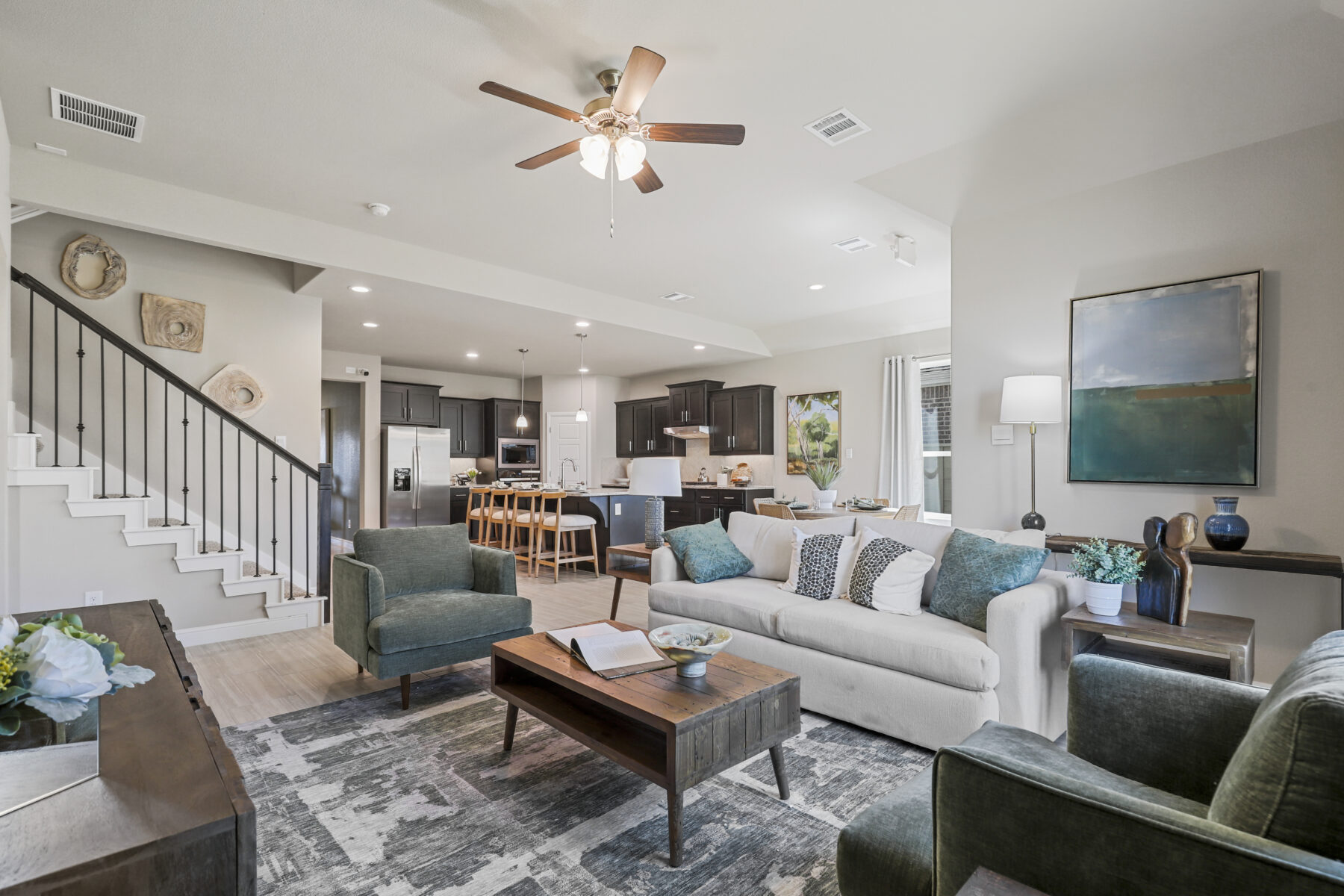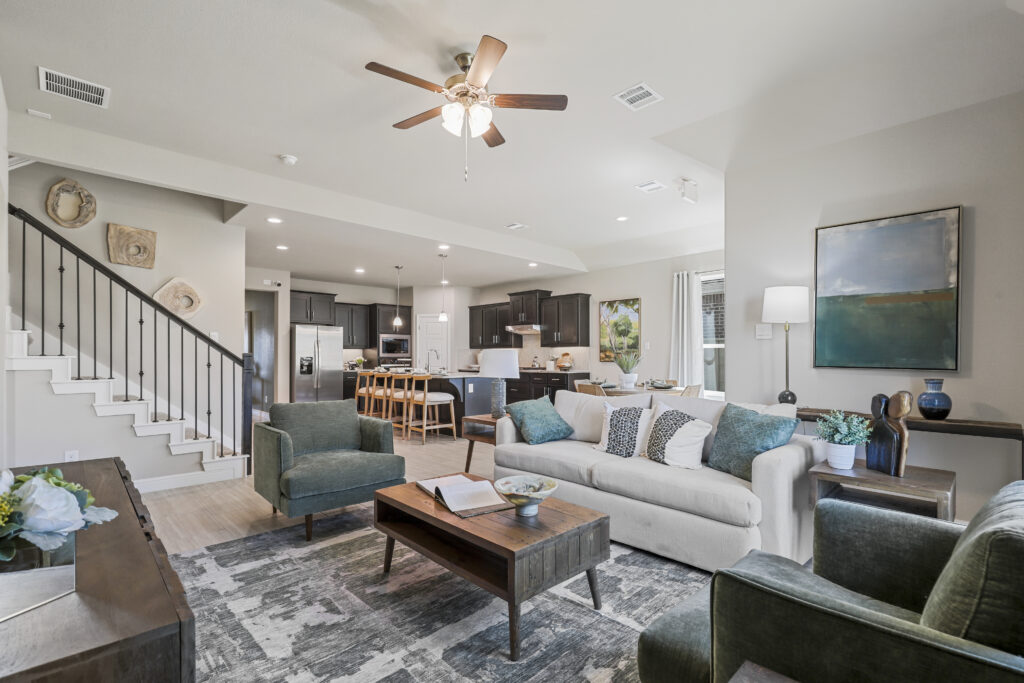

Blog
Buying a new home is one of life’s most exciting milestones. It’s a time filled with dreams of decorating, hosting family, and putting down roots in a vibrant community. While the listing price and mortgage are top of mind, savvy homebuyers know that the true cost of homeownership extends beyond the monthly principal and interest payment. Understanding these additional expenses, often called the hidden costs of homeownership, is the key to budgeting confidently and enjoying your new home without financial surprises.
The good news for Texans? While a 2024 Bankrate study revealed that hidden homeownership costs have surged by 26% nationwide since 2020, Texas has seen one of the smallest increases in the country at just 14%. This positions the Lone Star State as a place of relative stability and value for prospective homebuyers. Keep reading to explore why the hidden costs of buying a home in Texas are more attractive than in other places around the country.
How Texas Compares to Other States
While the national average for hidden homeownership costs now sits at approximately $17,500 annually, Texas remains comfortably below that figure. This financial advantage becomes even more apparent when compared to states like Utah, Idaho, and Hawaii, which have experienced dramatic cost spikes. For homebuyers looking for more affordable homes with long-term value and predictable expenses, Texas typically can offer a stable financial landscape for putting down roots.
Major Categories of Hidden Costs
The “true cost of homeownership” is a combination of several key expenses. Beyond your mortgage, the most significant recurring costs typically include:
- Property Taxes: A necessary expense that funds local services like schools, public parks, emergency services, and infrastructure
- Homeowners Insurance: Protects your largest investment from unforeseen events
- Maintenance and Repairs: The ongoing upkeep required to keep your home in top condition
- Utilities, Internet, and Cable: Essential monthly services for modern living
- HOA Dues: Owning a home in many planned communities, including Hillwood Communities, involves paying HOA dues, but depending on the community, those dues may cover some of your monthly utilities and expenses such as cable TV service, Internet service, front yard maintenance, security monitoring, etc. HOA dues also pay for the maintenance of the amenities and grounds at the community. Ask the HOA management team for details about what is covered at your preferred community.
Property Taxes in Texas
It’s true that Texas has property tax rates that are higher than the national average. However, this is balanced by a significant financial benefit: Texas is one of a handful of US states that does not levy a personal income tax on its residents. This trade-off often results in a lower overall tax burden for residents.
Furthermore, the cost of living in many parts of Texas remains at or below the national average. Property tax rates vary by county and city, so it’s important to research the specific rates for the area where you plan to buy.
Homeowners Insurance Costs
Across the country, increasingly volatile weather patterns have led to a rise in homeowners’ insurance premiums. Texas is no exception, and budgeting for a realistic insurance payment is a critical part of planning your home purchase. A new construction home, built to the latest codes and standards, can sometimes help moderate these costs compared to older properties.
Maintenance, Repairs, and Utilities
A common rule of thumb is to budget 1-2% of your home’s value for annual maintenance and repairs. For a new construction home, initial repair costs are often minimal and covered by builder warranties, providing significant peace of mind. However, ongoing maintenance is still essential. As for utilities, these costs continue to rise and should be factored into your monthly budget.
Upfront and Recurring Fees Beyond the Mortgage
In addition to ongoing expenses, homebuyers should prepare for one-time closing costs, which can include appraisal fees, inspections, and title insurance. As mentioned above, another recurring cost is Homeowners Association (HOA) fees.
In Hillwood Communities, these fees are a direct investment in your quality of life. Not only do they fund the incredible amenities and beautifully maintained common areas, they also pay for our signature Lifestyle by Hillwood programming that brings neighbors together for everything from holiday festivals to fitness classes to craft workshops to block parties.
Frequently Asked Questions About Texas Homeownership Costs
What fees are associated with buying a house?
Beyond the down payment, expect closing costs, which typically range from 2-5% of the home’s purchase price. This covers appraisal fees, loan origination fees, title insurance, and more.
What home repairs should new owners budget for each year?
While new homes come with warranties, it’s wise to set aside funds for future needs. Eventually, your home will need a new coat of paint or a new roof. Many years down the road, major systems like HVAC units or water heaters will need replacement. An emergency fund helps you prepare for these large, yet predictable, expenses.
What regular maintenance can I expect for Texas homes?
Typical maintenance includes lawn care, pest control, seasonal HVAC tune-ups, and cleaning gutters to ensure your home remains in pristine condition.
What are the ongoing monthly expenses after purchasing a home?
Your primary expenses will be your mortgage payment (which often includes property taxes and insurance in escrow), utility bills, and any HOA fees.
How do property taxes and homeowners’ insurance affect the overall cost of homeownership in Texas?
These two factors are significant parts of your monthly housing payment. They are often collected by your lender as part of an escrow account and can fluctuate annually, impacting your total payment.
What hidden or additional costs should buyers be aware of beyond the listing price?
Remember to budget for moving expenses, initial furnishings, potential utility connection fees, and establishing an emergency fund for unexpected repairs.
Practical Tips for Budgeting and Planning
Being prepared is the best way to turn the hidden costs of buying a home into predictable ones. Start by creating a detailed budget that accounts for all the expenses listed above. Aim to build an emergency fund that can cover 3-6 months of living expenses for complete peace of mind.
By understanding the full financial picture, you can confidently navigate the homebuying journey. With careful planning, you’ll find that today’s market presents a fantastic opportunity.
Hillwood Communities in Texas Offer Enduring Value
The best way to see how value, lifestyle, and community come together is to experience it firsthand. We invite you to explore the beautiful new homes at one of our communities in DFW, greater Austin, or the Houston area, learn about our future new home communities, and discover the well-built life that awaits.
Our new construction builders have available homes, and many are offering incentives, so now is a great time to buy!

